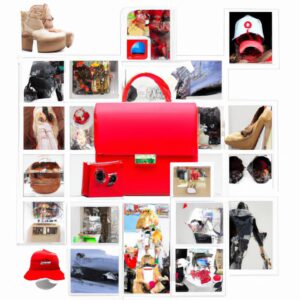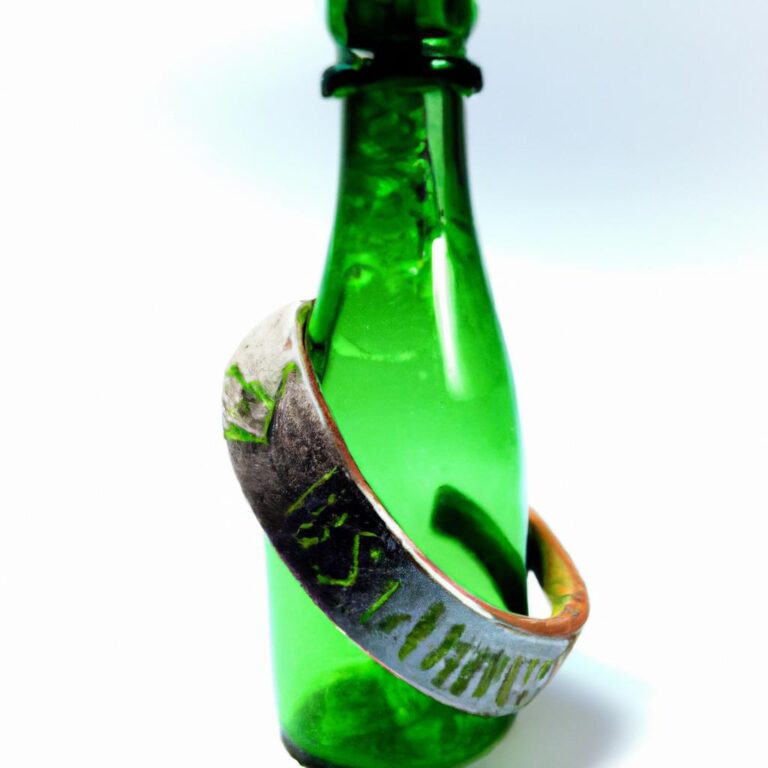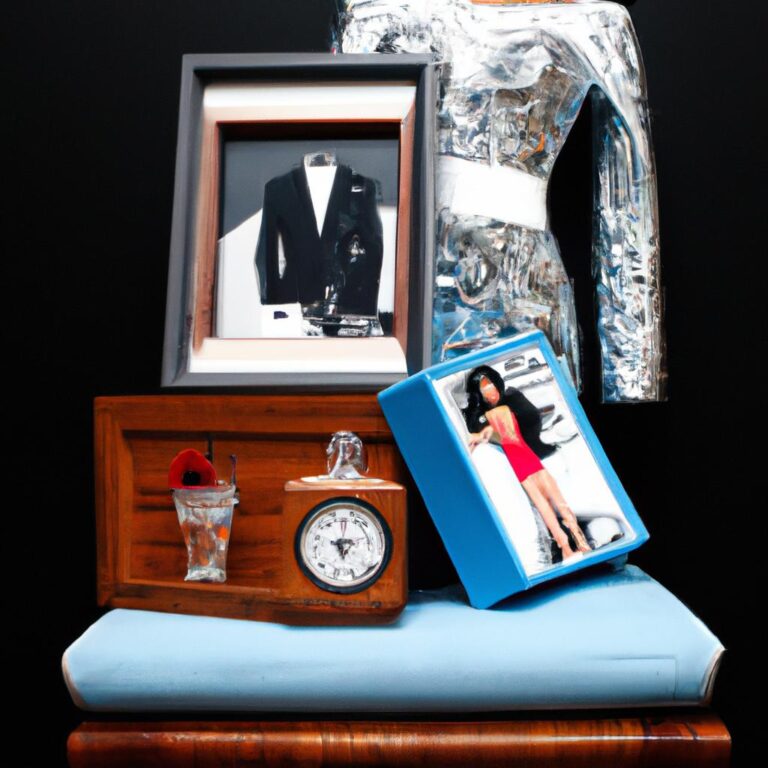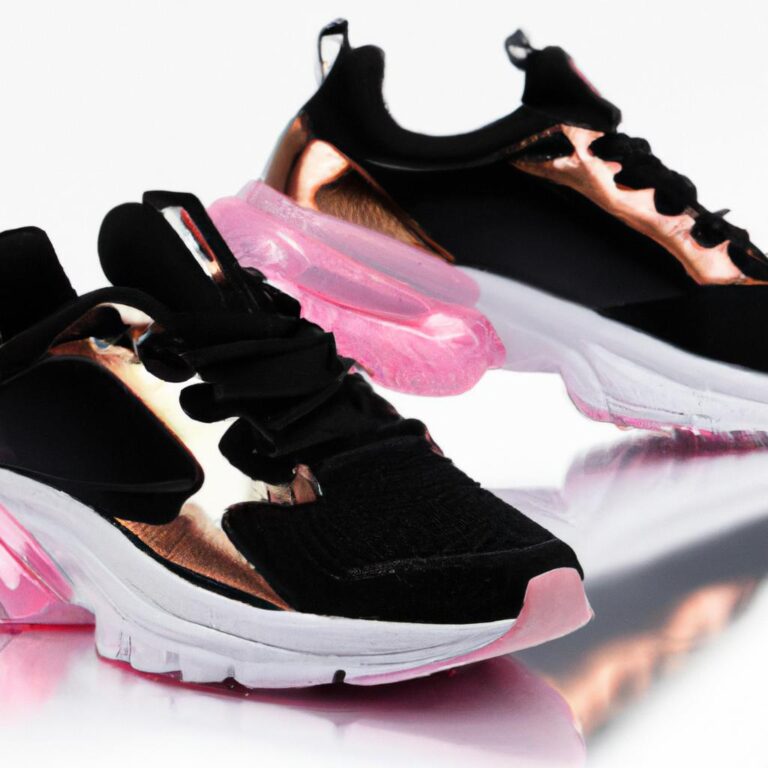
Introduction: What is Influencer Marketing and its Impact on the Fashion Industry?
Influencer marketing attempts to reach consumers by connecting established individuals or organizations with products, services, and brands. It is primarily used as a form of marketing and branding within the fashion industry as it has become an increasingly important tool in today’s digital world. In fashion, influencer marketing allows the brand to promote their products through influencers who have already established a presence within that market.
The impact of influencer marketing in the fashion industry is an expansive one. As an effective and engaging means of communicating the desired message to the intended audience, influencer marketing has become a major tool for fashion brands to engage audiences, build brand recognition, generate sales, and ultimately reach more customers. While using influencers as ambassadors of the brand can be an effective strategy, it also comes with its own set of challenges and risks.
In this guide, we’ll explore the influence of influencer marketing in the fashion industry, what factors contribute to its growth, the types of influencers who use it, how brands use this type of marketing, the pros and cons, case studies of successful uses, controversies surrounding influencer marketing, as well as possible solutions for clearing up any controversies.
Factors that Contribute to the Growth of Influencer Marketing in Fashion
Influencer marketing has seen significant growth in the fashion industry in recent years. This is due to several factors, including the rise of digital media, the prevalence of consumer-brand relationships, and the emergence of new technologies that allow for more targeted and effective campaigns. Let’s look at a few of the reasons why the popularity of influencer marketing in fashion is on the rise.
The Rise of Digital Media
The global explosion of digital outlets such as blogs, social media, and streaming platforms has made it easier for influencers to reach their target audience. It is now much easier to communicate with potential customers through these channels, which makes it easier for brands to tap into influencers’ network of followers and obtain more engagement with their products or services.
Consumer-Brand Relationships
These days, consumers expect a more personal relationship with the brands they buy from. They want to trust the brand and feel valued as customers. Influencer marketing plays a huge role in fostering these relationships, as it allows brands to show real-life people using and endorsing their products. By seeing content from the influencers they follow, viewers can easily form connections with the brands. This helps build trust and boosts brand loyalty.
Emerging Technologies
As technology evolves, so does influencer marketing. Brands now have access to tools that allow them to measure the success of their influencer campaigns more effectively. By tracking ROI, measuring engagement, and using data-driven insights, companies are able to create campaigns that are tailored to their specific needs and provide better results.
These are just a few of the factors that have contributed to the growing popularity of influencer marketing in fashion. The bottom line is that by embracing influencer marketing, brands can establish deeper relationships with their customers and drive more sales.
Types of Influencers who Participate in Fashion Influencer Marketing
When it comes to influencer marketing in fashion, there are several different types of influencers who have become successful in increasing brand awareness and driving sales. These influencers can be categorized based on their reach, engagement levels, and expertise.
The first category of influencers are micro-influencers who are typically smaller, up-and-coming accounts with fewer than 10K followers. These influencers are generally considered to be more authentic and relatable as many of their followers are on the same journey to discovering fashion trends. Micro-influencers often specialize in a specific niche which gives them authority in their area of expertise.
The second category of influencers are mid-tier influencers. These influencers typically have anywhere between 10K – 1M followers. They are usually well known for a specific skill or talent which makes them attractive to brands looking to drive sales. They are often considered to have higher visibility and can easily connect with their followers due to their larger following.
The third category is macro-influencers which are usually celebrities or top-tier influencers. They typically have over 1M followers and boast a large online presence. Macro-influencers tend to have a wide array of skills and talents, making them the go-to influencers for many brands. However, they are also the most expensive and difficult to work with as their fees can be quite high.
Finally, nano-influencers are becoming increasingly popular within the fashion industry. These influencers typically have under 1000 followers and are a great way for brands to engage with a more niche audience. Nano-influencers are known to have higher engagement levels and offer brands access to loyal and passionate followers.
How Brands Use Influencer Marketing for Fashion Products
Influencer marketing has become an integral part of the fashion industry. It is a type of marketing where brands collaborate with influential social media personalities to reach audiences in an authentic and engaging way. Whether it’s through sponsored posts, product placement, or simply flashing swag on their profiles, influencers have the power to reach thousands of potential customers.
Brands use influencer marketing for their fashion products by creating an official partnership with influencers. This usually includes providing the influencer with products or services in exchange for exposure from their personal brand. Through this, brands are able to receive targeted, authentic promotion that stands out as genuine to those who engage with it. Brands also provide support to influencers and help promote their own content. This means that brands can bring more visibility to their products while simultaneously increasing brand loyalty amongst their customers.
By working closely with influencers, brands are better able to create dynamic and personalized campaigns that are tailored to each influencer’s unique audience. Additionally, influencer marketing allows brands to get creative and explore avenues that they may not normally consider when advertising their fashion products. This allows them to really make their presence known in the industry and expand their reach.
Through influencer marketing, brands have the ability to create better relationships with their customers by leveraging the trust the influencers have earned from their followers. This also gives brands the opportunity to reach new audiences that may have been unreachable before. Additionally, influencers can provide valuable feedback to brands to help them with product development and design.
Overall, influencer marketing has become an effective strategy for brands to reach their target audience. By partnering with the right influencers and creating the perfect campaign, brands can maximize their visibility and stand out in the fashion industry.
Analysis of the Pros and Cons of Influencer Marketing in Fashion
In this section, we will look at the pros and cons of influencer marketing in the fashion industry. It is important to have a balanced view of the practice, so we can determine if it is worth it for a brand to invest time and resources into influencer marketing.
Pros of Influencer Marketing in Fashion
- Increased exposure – As influencers have huge followings, they can reach potential customers on a larger scale than traditional marketing methods.
- Cost-effective – Using influencers is a cost-effective way to promote products as most influencers charge a fixed fee or accept free products in exchange for promotion.
- Authenticity – Influencers often have an authentic relationship with their followers, which can result in higher levels of engagement and more organic leads.
- Target Audience – By working with influencers, brands can target their desired audience and receive valuable insights about their customers.
Cons of Influencer Marketing in Fashion
- Ineffective Results – As with any form of marketing, results are not guaranteed. If the influencer has a large following but low engagement rates, the campaign may not be as successful as expected.
- Time Intensive – Influencer marketing campaigns require time and resources to set up, as well as ongoing management and evaluation.
- Fakes – There are fake influencers out there who are only interested in money and not in providing genuine promotion. It is important to research influencers thoroughly before working with them.
- Controversy – Some influencers have faced controversy due to their promotion of products. This can be damaging to the brand’s reputation and should be carefully managed.
Case Studies of Successful Uses of Influencer Marketing
The power of influencer marketing is no longer in question, let’s look at some real life case studies to see how it has been utilized successfully by fashion brands.
One of the best examples of influencer marketing in fashion was seen in 2017 when Adidas tapped into the influence of the 17-year-old American singer-songwriter Sofia Carson to launch her version of the Superstar Sneaker. The result was a huge success with sales of the sneaker greatly exceeding expectations and creating a buzz around the product.
Another example of successful influencer marketing in fashion is when H&M collaborated with Canadian singer and songwriter Shawn Mendes to create a limited-edition capsule collection for the holidays. The collection featured stylish streetwear which resonated with Shawn’s young fans. It was so successful that it sold out within just six weeks!
Finally, one of the most successful examples of influencer marketing in fashion was when Gucci partnered with artist and influencer Trevor Andrew (aka Gucci Ghost) to create a streetwear collection. This collaboration resulted in an immensely popular line of apparel and accessories that have become cult classics in the fashion world.
These case studies demonstrate the significant power of influencer marketing and its potential to increase awareness and drive sales for fashion brands.
Controversies Surrounding Influencer Marketing in Fashion
The popularity of influencer marketing in the fashion industry has created quite a stir over the years. While it offers numerous advantages to both brands and influencers, there are also a few controversial issues that have been raised about the practice.
First and foremost, some people feel that influencer marketing can be deceitful because it does not always accurately depict reality. Because of this, many customers may be purchasing something that they think looks different or better than it does in real life. Furthermore, influencers often promote products without disclosing that they are sponsored, which can cause confusion and mistrust among customers.
Another issue that has been raised about influencer marketing in fashion is the lack of diversity among influencers. It has been noted that there is an overall lack of representation for many people of color, body types, and other diverse backgrounds, suggesting that brands are choosing certain individuals simply for their popularity instead of truly representing who wears their clothes. This has caused some to question how genuine the influencer marketing campaign truly is.
Finally, there have been questions raised around the use of influencers in campaigns sponsored by luxury fashion brands. Some people have argued that these campaigns make it difficult for people to afford designer items when prices have already been inflated. It has additionally been argued that influencer marketing is (in some ways) increasing the cost of these items, making them even more inaccessible to the average person.
These issues have caused significant controversy in the influencer marketing space, which is why it is important for fashion brands to be aware of the potential pitfalls of using influencers. Ultimately, however, with the right approach and guidelines, influencer marketing can be a beneficial tool for reaching larger audiences and increasing brand awareness.
Potential Solutions for Clearing Up Influencer Marketing Controversies
As with any complicated issue, there is not a clear-cut solution to the controversies around influencer marketing in fashion. However, there are several potential solutions that could help to alleviate these issues and create a more ethical industry.
The first step in solving this problem is for brands to become more transparent about their relationships with influencers. This could include publishing information about what kind of compensation influencers receive for campaigns, as well as providing greater insight into how campaigns are structured and what steps a brand takes to ensure influencers are not engaging in unethical practices.
Additionally, brands should strive to make sure their influencer marketing campaigns are diverse and inclusive. Influencers should represent different ages, genders, sizes, cultures, and backgrounds to ensure the message is accurately conveyed to all customers. By creating campaigns that reflect real life, brands will be able to engage with their target audience more authentically.
Finally, both brands and influencers need to make an effort to be more mindful of the kind of content they are posting. Brands should consider how their campaigns could be interpreted by the public and take steps to ensure they are promoting a positive message. Meanwhile, influencers should strive to be open and honest about what kind of collaborations they are involved in and think carefully about the kind of content they are putting out.
By following these steps, the fashion industry can move towards more ethical influencer marketing practices that will benefit both brands and influencers alike.
Conclusion: Recap & Final Thoughts on the Impact of Influencer Marketing in Fashion
In conclusion, influencer marketing in fashion has been steadily increasing in both impact and controversy since its rise in popularity. As technology changes, so does the industry’s capitalization on social media influencers as a means of direct-to-consumer marketing. It can be argued that influencer marketing in fashion provides valuable opportunities for both the influencers and brands. However, it can also be seen as a form of over-commercialization, causing several debates about the ethical implications of such campaigns.
When considering the plethora of advantages and disadvantages surrounding this marketing technique, there is no clear consensus. While some may value the increased brand visibility, others may condemn the lack of regulation or potential exploitation. Whether one’s opinion may be positive or negative, influencer marketing in fashion will remain a heavily discussed and heavily used tool in the foreseeable future. The industry has had many successes and failures, but continues to be a dominating player in the realm of consumerism.
comments: 0






